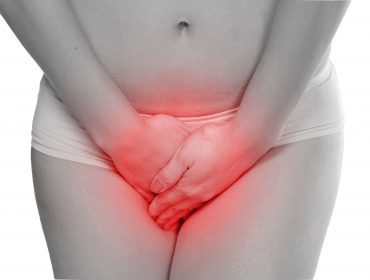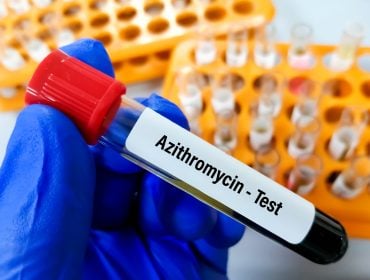Definition and Types of Genital Ulcers
A genital ulcer is a sore or lesion that develops on the genital area. These ulcers can be caused by various factors, including sexually transmitted infections (STIs) like herpes, syphilis, chancroid, and genital warts, as well as non-infectious conditions such as trauma, Behçet’s disease, and autoimmune disorders. Genital ulcers may vary in appearance and severity depending on the underlying cause. They can be painful, itchy, or present with other symptoms such as discharge or swelling. Prompt medical evaluation is crucial for proper diagnosis and treatment.
Chancroid STD
Chancroid is caused by bacteria known as Haemophilus ducreyi. It is characterized by single or multiple tender ulcers on the genitals and swelling of nearby lymph nodes. Symptoms can last for about three to four weeks if left untreated.
A question we get asked quite often is whether chancroids are sexually transmitted diseases. Chancroids are a type of STD that is caused by the bacterium Haemophilus ducreyi. It affects primarily the external genitalia and sometimes causes painful, firm ulcerations known as chancres. If left untreated, chancroids can spread to the internal reproductive organs and cause permanent damage. Treatment usually involves antibiotics and pain relief medications.
Herpes
Herpes is caused by the virus HSV-2 and is highly contagious in nature. This type of genital ulcer usually appears as small grouped blisters that eventually break open into shallow, painful, and sensitive-to-touch sores. Symptoms can recur several times throughout a person’s lifetime if left untreated.
Syphilis
Syphilis is caused by the bacteria called Treponema pallidum. It is typically spread through sexual contact with someone who has already been infected. Primary symptoms include a single, small, painless sore that usually appears at the site of infection anywhere from 10 days to 3 months after exposure. Check out our syphilis symptoms page for more information.
Donovanosis
Donovanosis (granuloma inguinale) is caused by Klebsiella granulomatis bacteria and occurs more commonly in tropical climates such as India, South America, and Africa. Symptoms include red bumps and open sores around the genitals that may become enlarged over time and form a large mass. Treatment with antibiotics is typically effective but must be administered promptly to avoid any permanent damage or scarring of tissue.
Causes of Genital Ulcers
Genital ulcers can be caused by a variety of factors, including bacterial or viral infections, physical trauma, and sexually transmitted diseases. Other possible causes include autoimmune disorders, allergic reactions, skin conditions such as psoriasis, poor hygiene practices, and even certain medications.
The most common cause of genital ulceration is an infection with bacteria or viruses. This type of infection is typically spread through direct skin contact during sexual intercourse or intimate contact.
Other potential causes include physical trauma to the area (such as due to vigorous sex play), poor hygiene practices (which may lead to secondary bacterial infections), autoimmune disorders that affect the skin (such as lichen planus), allergies that affect the genitals and/or surrounding area (such as latex sensitivity), skin conditions such as psoriasis or eczema, prolonged use of topical steroids in the area, and certain medications.
Symptoms of Genital Ulcers
The symptoms of genital ulcers can depend on the underlying cause. Generally, however, they include pain or discomfort in the area, red bumps or sores that may ooze or bleed, swelling or tenderness around the area, discharge from the lesions, itching and burning sensations in the area, and in some cases, fever.
Infections typically appear as single or multiple open sores that can be painful and tender to touch. Bacterial infections may also cause redness and swelling around the genital area.
Physical trauma to the genital region may result in bruises and bleeding. Allergic reactions can also cause redness and swelling of the skin, along with itching and/or burning sensations. Skin conditions such as psoriasis may manifest as patches of scaly skin on or around the genitals. Prolonged use of topical steroids can lead to thinning of skin in the affected area, along with blisters that may burst open into shallow ulcers.

What are Vulvar Ulcers?
Vulvar ulcers are a type of genital ulcer that appears on or around the vulva, which is the external portion of the female genitals. They are characterized by painful lesions that can be red, swollen, and/or tender to the touch.
Vulvar ulcers can be caused by a variety of factors, including bacterial and physical trauma, viral infections, sexually transmitted diseases, allergic reactions to certain materials or medications, skin conditions such as psoriasis and eczema, prolonged use of topical steroids in the area and autoimmune disorders.
The symptoms associated with vulvar ulcers vary depending on the underlying cause. Generally, they include pain or discomfort in the affected area, red bumps or sores that may ooze or bleed, and swelling or tenderness around the area. As mentioned earlier, it sometimes, it can lead to a fever.
Causes of Vulvar Ulcers
Vulvar ulcers can be caused by a variety of factors, including bacterial and viral infections (such as chancroid, herpes, syphilis, and donovanosis), physical trauma, STDs, allergic reactions to certain materials or medications, skin conditions such as psoriasis and eczema, prolonged use of topical steroids in the area and autoimmune disorders.
Infections are typically the most common cause of vulvar ulcers. Bacterial infections may cause redness and swelling around the genital area. Viral infections normally appear as single or multiple open sores that can be painful and tender to touch. Physical trauma to the genital region may result in bruises and bleeding. Allergic reactions can also cause redness and swelling of the skin, along with itching and/or burning sensations. Skin conditions such as psoriasis may manifest as patches of scaly skin on or around the genitals. Prolonged use of topical steroids can lead to thinning of skin in the affected area, along with blisters that may burst open into shallow ulcers.
Symptoms of Vulvar Ulcers
The symptoms associated with vulvar ulcers vary depending on the underlying cause. Generally, they can include pain or discomfort in the affected area, red bumps or sores that may ooze or bleed, swelling or tenderness around the area, discharge from the lesions, itching, and sometimes, fever. If left untreated, vulvar ulcers can lead to complications such as enlarged lymph nodes and difficulty urinating. Painful urination can occur as well.
Are Vulvar Ulcers a Sexually Transmitted Disease?
Vulvar ulcers can, in some cases, be caused by sexually transmitted diseases (STDs). However, they can also be caused by other infectious agents such as bacteria or viruses, physical trauma, or allergic reactions. Therefore, you must consult a doctor if you experience any symptoms associated with vulvar ulcers, as they may require medical treatment.
Treating Genital and Vulvar Ulceration
Genital and vulvar ulcers can be a painful and uncomfortable condition. Fortunately, there are treatments available to help manage all the symptoms. Analgesia can relieve pain, such as simple oral or topical medications like lidocaine gel. Additionally, it is important to avoid irritants such as soaps, pads, tight underwear, or clothing that may worsen the condition. In some cases, anti-inflammatory medications like ibuprofen or topical corticosteroids may be prescribed to treat underlying immune or inflammatory conditions. Antibiotic and antiviral medicines may be given as either a pill or a shot for STIs. Barrier ointments like petroleum jelly can also protect the area from further irritation.
Preventing Further Recurrence of Genital or Vulvar Ulcers
To help prevent further recurrence of genital or vulvar ulcers, it is important to practice good hygiene and limit physical activities that may cause friction. It is also advised to wear loose clothing made of breathable fabrics such as cotton to allow air circulation. Suppose the ulcers are caused by an STI. In that case, it is essential to use protection during sexual activities and practice safe sex. It is advisable to reduce stress levels and maintain a healthy diet, including adequate intake of vitamins C and E, known for their healing properties. Additionally, topical antiseptics such as povidone-iodine solution can be used on the affected area to cleanse and protect against infection.
How to get rid of genital ulcers?
Genital ulcers can be a distressing and uncomfortable experience. It is important to seek medical advice for proper diagnosis and treatment.
There are various underlying causes of genital ulcers, including sexually transmitted infections such as herpes or syphilis. It is crucial to identify the specific cause in order to determine the most appropriate treatment approach.
In general, treatment for genital ulcers often involves a combination of medication and lifestyle changes. This may include antiviral medications to help control viral infections, antibiotics for bacterial infections, and pain relief measures to alleviate discomfort.
Maintaining good hygiene and avoiding sexual activity until the ulcers have completely healed can also help prevent further infection or transmission. It is essential to follow the recommended treatment plan provided by a healthcare professional and attend regular follow-up appointments to ensure proper healing and prevent complications.

Summary of Genital and Vulvar Ulcers
Genital and vulvar ulcers are painful sores that can occur on the genital or vulvar area. The causes of these ulcers range from infections, allergies, autoimmune disorders, and even trauma. Treatment includes analgesia for pain relief, anti-inflammatory medications, antibiotics, antivirals if needed, barrier ointments to protect the area from further irritation, and good hygiene practices such as wearing loose clothing made of breathable fabrics and avoiding irritants like soaps or tight underwear. Additionally, vitamins C and E may be beneficial in aiding the healing process.
Knowledge is Power – Arm Yourself with Information on Genital or Vulvar Ulceration
Genital or vulvar ulceration can be a frightening experience. It is important to arm yourself with information so you can make informed decisions about your health. Genital ulcers are minor wounds that can form on the vagina, penis, or anus. The most common cause of genital ulcers is sexually transmitted infections (STIs). Other causes may include rare sequelae of autoimmune diseases, trauma, and drug reactions.
The diagnosis of genital ulcers can be made by physical examination and laboratory tests such as cultures for STIs and biopsies for non-infectious causes. Treatment depends on the underlying cause and often includes antibiotics, antivirals, topical medications, or surgery.
Being informed about the condition and its treatment options, you can take steps to protect your health and well-being. If you feel that you may have an STD that is causing genital ulcers, you should get tested today. Try our 10-panel STD test, which covers all your concerns.
Medically Reviewed by Julie Hutchinson, MD on March 27, 2023
Secure and Confidential
STD testing services
The fastest results possbile - available in 1 to 2 days

Tagged
Categorized As
Author: STD Check Editorial Team
At STDCheck.com, we go to great lengths to ensure quality content. We’re using our own collection of data. It is not bought or made up for “click-bait” purposes. We don’t entice traffic with cheesy graphics or raunchy headlines. Our information is to promote STD testing, educate people, let go of social stigmas, and bring awareness. We also provide a completely confidential atmosphere through private testing. When we produce an article, it is fact-based. We check it with medical advisors that approve it. Our staff consists of doctors and other medical professionals who peer review the content we make available on STDCheck.com. From all over the world, we have sourced the best and the brightest content developers, including medical professionals, marketing engineers, data scientists, content specialists, and media relations.




